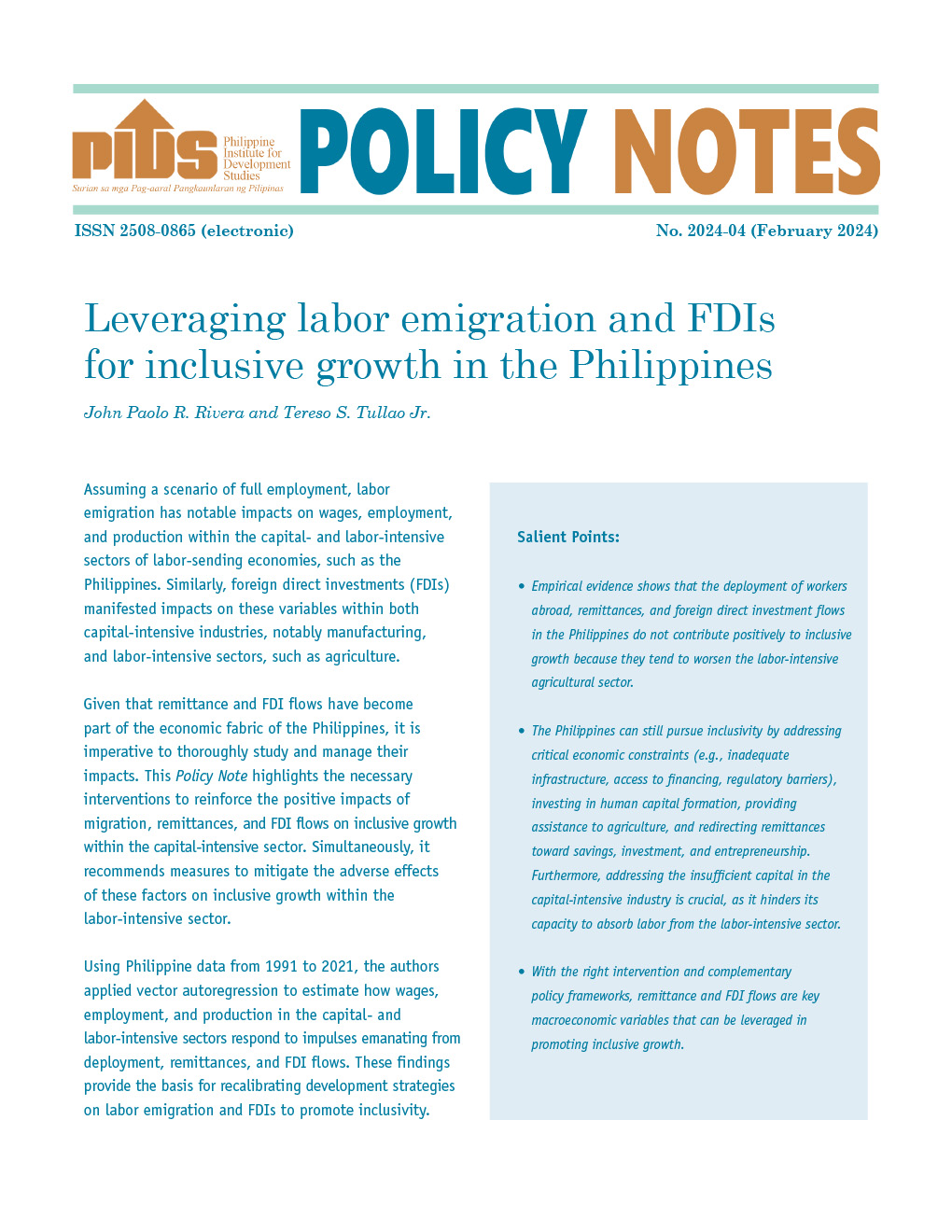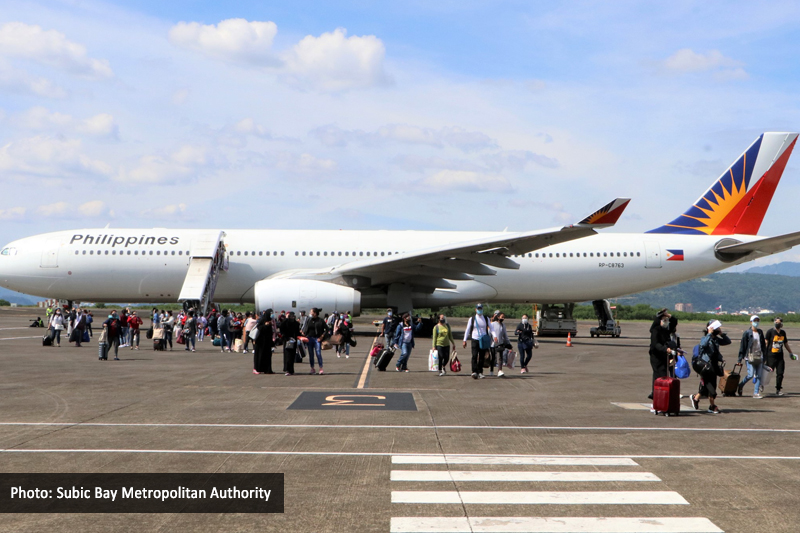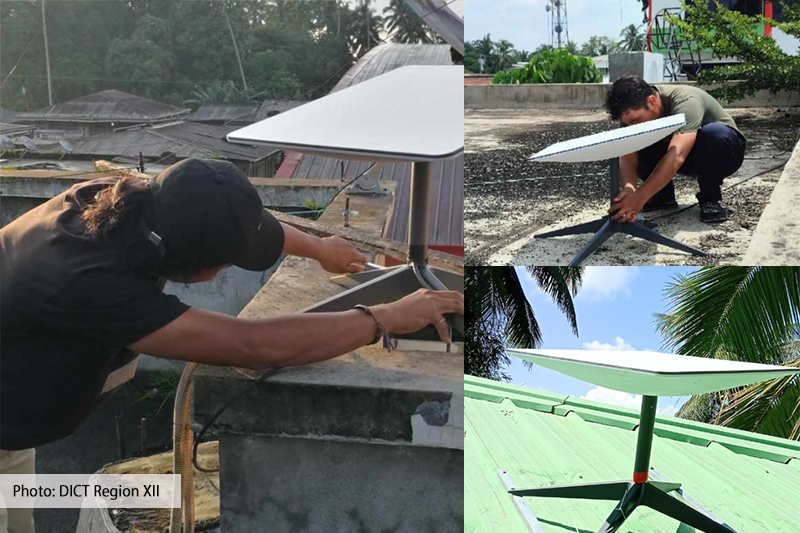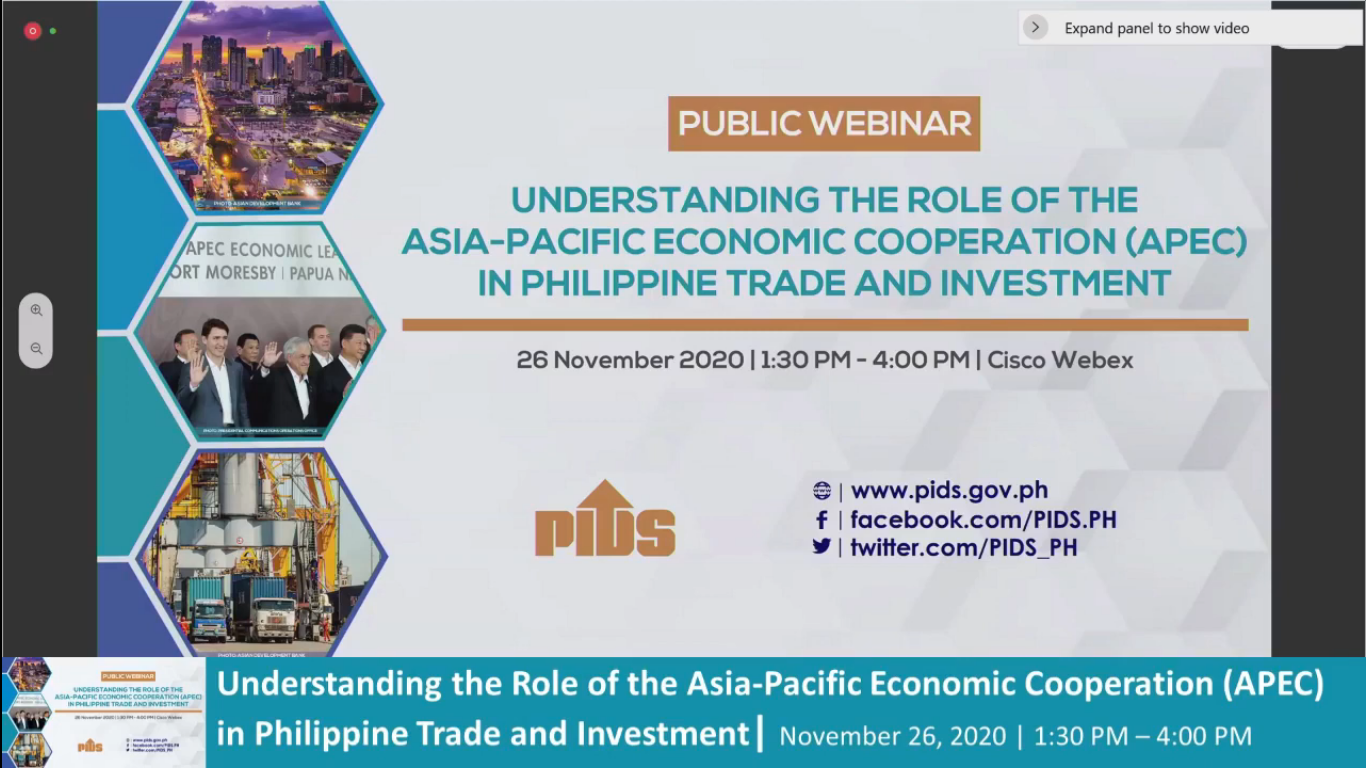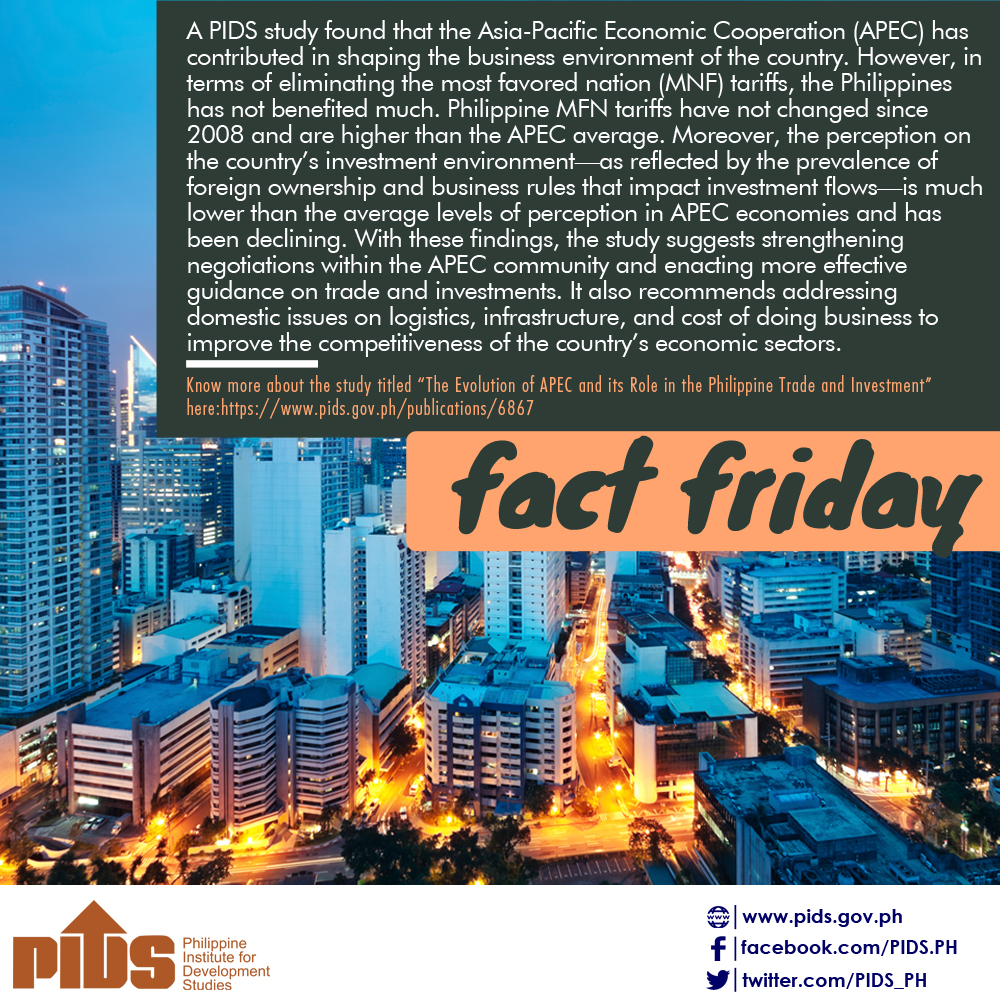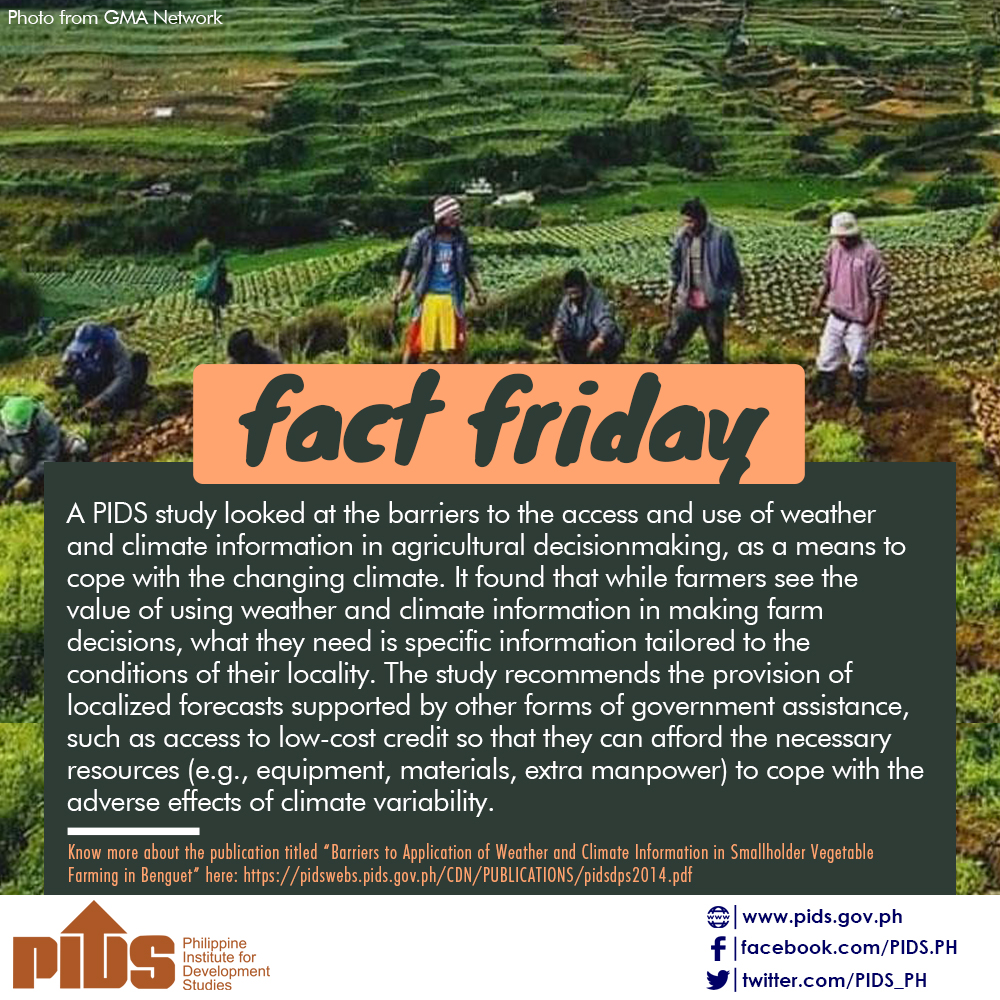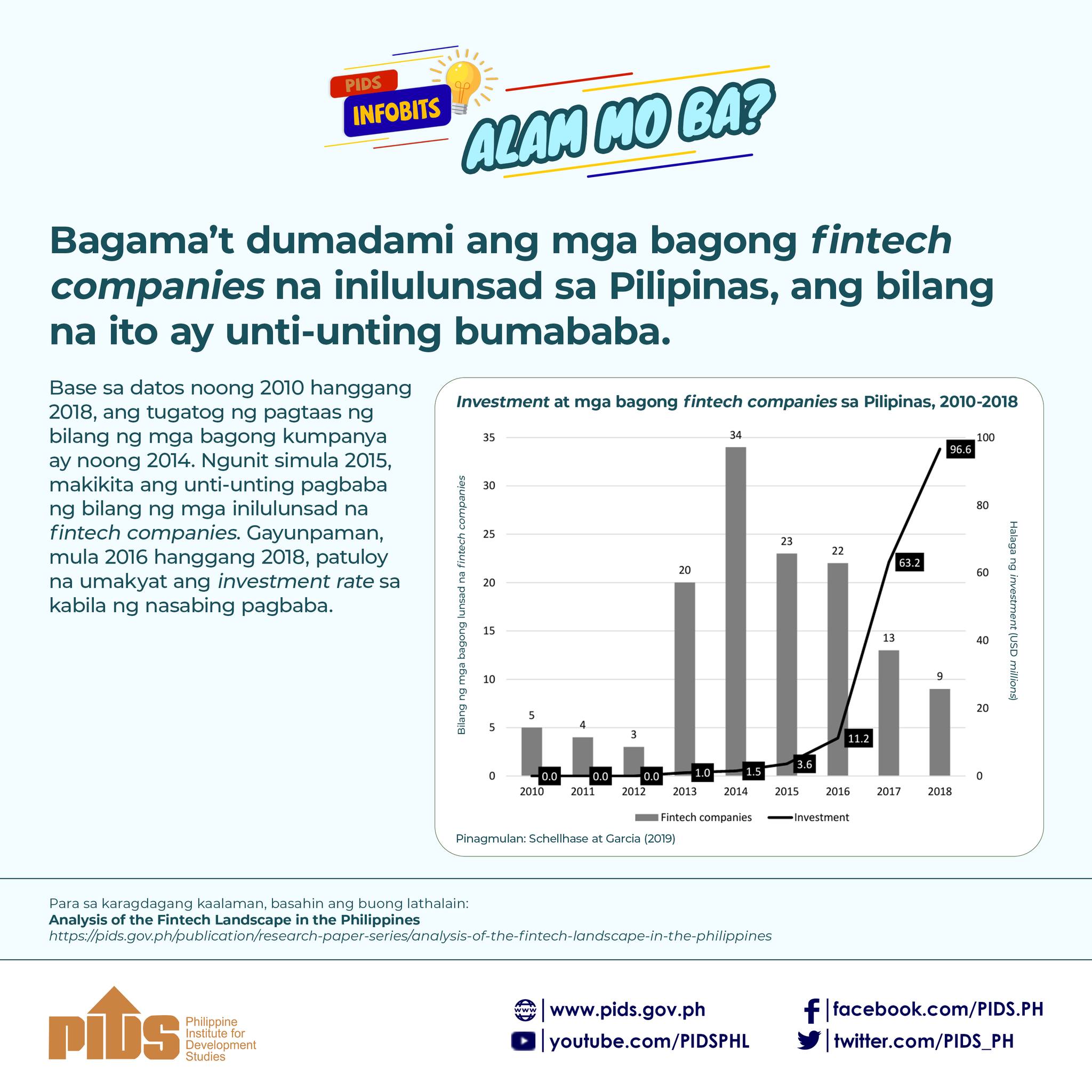The country’s Regular Foreign Investment Negative List (RFINL) remained silent on other restrictions that prevent foreign investors from making better investment decisions, according to a consultant of the state-owned think tank Philippine Institute for Development Studies (PIDS).
In a policy note, PIDS consultant Glenda T. Reyes said that if the Philippines wants to attract more foreign direct investments (FDI), it should have a more comprehensive negative list.
Reyes said the RFINL does not include information on limitations on the number of suppliers or divestment requirements, as well as exceptions to the general rule (e.g., where foreign participation may be allowed in specific cases or circumstances), among others.
“Although the FINL already provides some level of transparency, it still falls short of rendering a full picture of the country’s investment regime. In fact, it does not capture other regulatory measures that restrict engagement in an investment activity,” Reyes said.
“As such, potential foreign investors still have to do further work to search for these information, which entails additional costs on their part and adds to the risks of doing business in the Philippines,” she added.
Reyes, citing a report from the Organisation for Economic Co-operation and Development (OECD), said investment and transparency are linked such that greater transparency leads to higher investment flows and quality investments.
Transparency curbs abuse
She said that based on the report, transparency serves as an instrument to prevent abuse of authority by demanding accountability on the part of the government and business.
“The OECD added that a transparent policy environment can significantly reduce the cost of doing business and minimize investors’ risk perception,” Reyes added.
In order to reap the benefits of transparency in foreign restrictions, other countries have listed nonconforming measures annexed trade agreements they have signed.
The list enumerates all the regulatory measures they have adopted and maintained that are discriminatory against foreign investors and service suppliers.
Based on her compilation, Reyes said countries imposed discriminatory treatment against foreign nationals in terms of sectors, subsectors, industry or activity through ownership, type of legal entity, natural or juridical person and forms of entry, among others.
She said countries also restricted foreigners in engagement in private- or public-sector activities through exchange control, economic need, distribution channel, residency and legal presence, among others.
Further, there are restrictions surrounding land ownership through land leases, land rights, nationalization, divestment of ownership/equity, and approval for mergers, expansion and relocation, among others.
“The executive department can call upon its departments and agencies to come up with a transparency list to supplement and address the deficiencies of the FINL. The Philippines can refer to the general template on the negative list as used in trade agreements for guidance and basis,”
Two parts
The regular FINL consists of two parts. The first section, List A, enumerates the activities where foreign equity participation is restricted as prescribed under the 1987 Philippine Constitution and other existing laws.
The second section, List B, specifies the activities where foreign participation is limited up to 40 percent for reasons of public health, public morals, national security, national defense, and the protection of small and medium enterprises.
The first regular FINL was issued in 1994, three years after the Foreign Investment Act (FIA) was enacted in 1991.
Given the policy goals of the FIA to attract and promote foreign investment in the country, the law mandates the National Economic and Development Authority (Neda) to formulate and recommend the FINL to the president every two years.
As the last FINL was issued in 2015, the Neda has already prepared and submitted the 11th FINL to the Office of the President, where it is awaiting approval.

